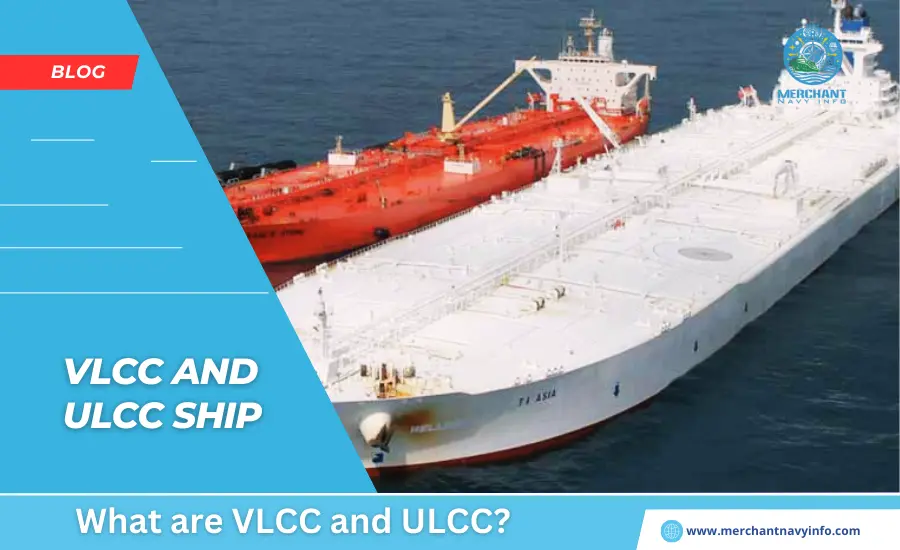
VLCC Ship
An Awfully Large Crude Carrier (VLCC ship) may be a sort of expansive tanker transport outlined particularly for transporting rough oil. VLCC ship is a subclass of oil tankers with a deadweight tonnage (DWT) that regularly ranges between 200,000 and 320,000 tons. These vessels are among the biggest ships in the world, surpassed in the estimate as they were by Ultra Expansive Rough Carriers (ULCC).
Reason And Utilize Of VLCC Ship
Transportation Of Rough Oil
The essential reason for VLCC ship is to transport unrefined oil from oil-producing locales to refineries where the oil is handled into different petroleum items. These tankers are capable of carrying huge amounts of unrefined oil, which makes them exceedingly effective for long-haul courses.
Economies Of Scale
VLCC ship offers critical economies of scale due to its huge carrying capacity. Transporting oil in bigger amounts decreases the toll per barrel compared to smaller vessels, making it more conservative for shipping companies and their clients.
Long-Distance Courses
VLCC ships are utilized overwhelmingly for long-distance courses, regularly navigating seas to put through oil-producing nations within the Center East, West Africa, and Latin America, with major consumption centers in North America, Europe, and Asia.
Coasting Capacity
In expansion to their part in transportation, VLCC ships are now and will be utilized as drifting capacity units. Amid times of fluctuating oil costs or overflow generation, these vessels can store oil seaward until it is financially reasonable to bring it to advertise.
Plan And Highlights
Measure And Measurements
- Length: Around 330 meters (1,083 feet)
- Bar (Width): Almost 60 meters (197 feet)
- Draft (Profundity): Around 20 meters (66 feet)
Cargo Capacity
VLCC ship can carry between 2 million to 3 million barrels of unrefined oil, which translates to generally 318,000 to 477,000 cubic meters.
Speed
The normal speed of a VLCC is around 15 times (almost 28 kilometers per hour or 17 miles per hour), which equals the requirement for convenient conveyance with fuel effectiveness.
Group
These vessels regularly work with a crew of almost 20 to 30 individuals, counting officers and evaluations.
Operational Viewpoints
Stacking And Emptying
VLCC ships are stacked at seaward oil terminals, which are equipped with facilities to handle such huge vessels. The method includes interfacing hoses from the terminal to the ship’s complex and pumping the oil into the ship’s tanks. At the goal, the oil is released either at seaward terminals or at deep-water ports prepared with the vital foundation.
Balance Operations
To guarantee solidness and seaworthiness when not completely stacked with cargo, VLCC carries seawater in counterweight tanks. This balance of water is overseen carefully to preserve the ship’s adjustment and auxiliary astuteness.
Natural Considerations
VLCCs work beneath rigid universal controls to play down their natural effect. Measures incorporate double-hulled development to diminish the chance of oil spills, squander management systems, and adherence to emission standards set by the Worldwide Oceanic Organization (IMO).
Financial And Key Significance
Worldwide Oil Supply Chain
VLCCs are a significant component of the worldwide oil supply chain, empowering the transport of huge volumes of unrefined oil over endless separations. This capability bolsters the working of universal markets and the worldwide economy.
Key Saves
Numerous nations utilize VLCC to preserve vital oil saves. These saves are basic for vitality security, giving a buffer against supply disturbances due to geopolitical occasions or characteristic catastrophes.
Advertise Elements
The accessibility and utilization of VLCC can impact oil costs. Amid periods of tall demand, the restricted number of these vessels can lead to expanded shipping rates, which in turn can influence the shipping rate by and large, taking a toll on rough oil.
ULCC
Ultra Expansive Unrefined Carriers (ULCC) are among the biggest ships ever built, and they are planned particularly to transport tremendous amounts of unrefined oil. These tankers have a deadweight tonnage (DWT) regularly surpassing 320,000 tons, with a few coming to up to 550,000 tons. ULCC are less in number compared to Exceptionally Huge Rough Carriers (VLCC) due to their gigantic estimate and the specialized foundation required to suit them.
Reason And Utilize Of ULCC
Transportation Of Enormous Amounts Of Rough Oil
ULCC is fundamentally utilized to transport amazingly expansive volumes of rough oil from oil-rich locales to major refining centers and utilization centers around the world. Their immense capacity makes them exceedingly productive for moving oil over long separations.
Economies Of Scale
These vessels give critical economies of scale by transporting oil in exceptionally huge amounts, which diminishes the taken a toll per barrel compared to littler tankers. This effectiveness is especially advantageous for long-haul courses, making oil transportation more cost-effective.
Vital Oil Capacity
Comparable to VLCC, ULCC can serve as coasting capacity units amid periods of abundance of oil generation or when it is financially beneficial to store oil incidentally. This capability is vital amid advertising variances and geopolitical instabilities.
Plan And Highlights
Estimate And Measurements
- Length: Regularly around 400 meters (1,312 feet) or more
- Pillar (Width): Roughly 70 meters (230 feet)
- Draft (Profundity): Approximately 25 meters (82 feet)
Cargo Capacity
ULCC can carry between 3 million to 4 million barrels of unrefined oil, interpreting to around 477,000 to 636,000 cubic meters of cargo capacity.
Speed
The normal speed of ULCC is around 14 to 16 knots (approximately 26 to 30 kilometers per hour or 16 to 18 miles per hour), adjusting convenient conveyance with fuel proficiency.
Team
These vessels ordinarily work with a group of around 20 to 30 individuals, counting officers and evaluations, comparable to VLCC.
Operational Perspectives
Stacking And Emptying
ULCC is stacked at uncommonly planned seaward oil terminals. Or also Single Point Mooring (SPM) frameworks, which can handle the gigantic measure and also draft of these vessels. The stacking preparation includes interfacing huge hoses to the ship’s complex to pump rough oil into the tanks. The oil is released at deep-water ports or seaward offices prepared to handle ULCC, as not all ports can oblige their measure and draft.
Counterweight Operations
To guarantee soundness when not completely stacked, ULCC utilizes seawater in counterweight tanks. Legitimate balance administration is pivotal to preserve the ship’s adjustment and basic astuteness amid voyages.
Natural And Security Contemplations
ULCC are subject to stringent international directions to play down natural impacts. This incorporates double-hulled development to decrease spill dangers, squander administration frameworks, and also comply with outflow measures set by the Worldwide Oceanic Organization (IMO).
Financial And Vital Significance
Worldwide Oil Supply Chain
ULCC play a basic part in the worldwide oil supply chain by empowering the productive transport of expansive volumes of unrefined oil. Their capacity underpins the ceaseless stream of oil to meet worldwide requests, affecting advertising solidness and also costs.
Vital Saves
Numerous nations and companies utilize ULCC for key oil saves. These saves are significant for guaranteeing vitality security, giving a buffer against supply disturbances caused by geopolitical occasions, common catastrophes, or also showcase instability.
Showcase Impact
The utilization of ULCC can affect oil costs and also shipping rates. Amid periods of tall request, the restricted number of ULCC can lead to expanded rates, which influences the by and large taking a toll of unrefined oil transportation and, subsequently, worldwide oil costs.
Conclusion
Together, VLCC and ULCC shape a spine for the worldwide oil industry. Guaranteeing that rough oil is transported effectively from generation destinations to refineries and also markets around the world. Their capacity to store oil amid advertising changes and also geopolitical vulnerabilities. Includes a layer of solidness to worldwide vitality supplies. Be that as it may, their operation requires cautious administration of natural and security measures to relieve potential dangers.
In conclusion, both VLCC and also ULCC are crucial to the advanced oil industry. Giving crucial administrations that support the worldwide economy. Their commitments to the effective transport of rough oil, fetched decrease, and also key capacity emphasize their significance within the ever-evolving scene of worldwide vitality coordinations.









